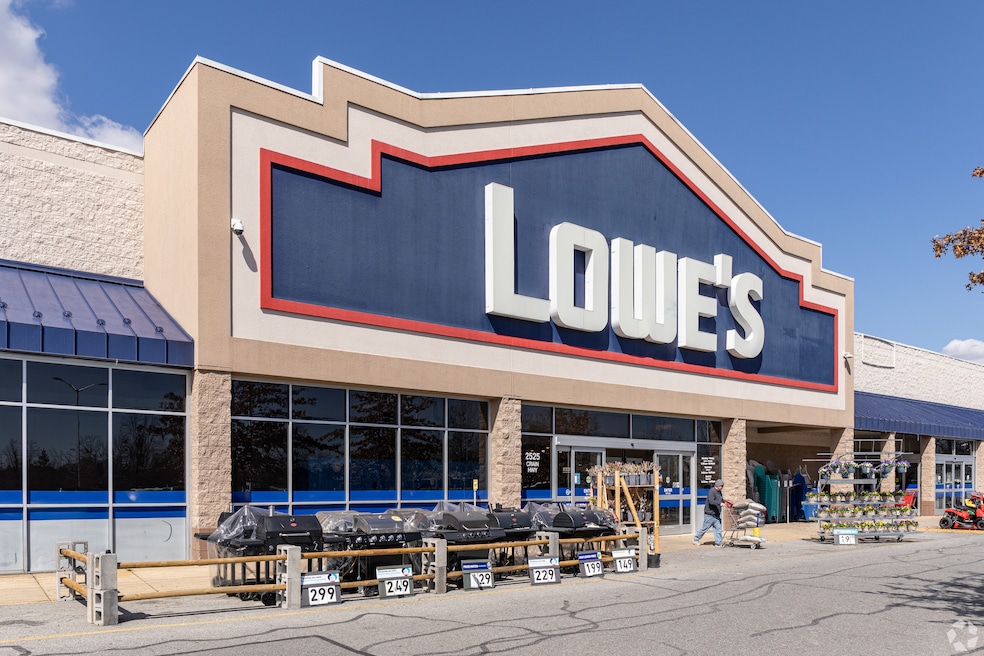Home professionals pick up Lowe's sale slack, while Target reports sales slump
Lowe’s sales fell by 1.7% as “unfavorable weather earlier in the quarter” kept DIY shoppers home, the retailer said in its earnings report issued Wednesday. Despite the dip, the Mooresville, North Carolina-based firm said sales were buoyed by “online comparable sales growth” from home professionals.
The results came as Target reported a 3.8% slump in sales for the quarter due to tariff-related uncertainty and other internal challenges. The Minneapolis-headquartered chain also trimmed its annual sales forecast, with its chief commercial officer, Rick Gomez, saying the company will have to raise some prices due to tariffs, joining Home Depot and some others.
As Target manages these downturns, the company seems to be focused on opening more brick-and-mortar stores in smaller towns across the United States, reported Modern Retail. In addition to adding more stores in urban areas, the retailer’s “Upcoming Store Openings” page suggests it’s stretching its legs in towns such as Fuquay-Varina, North Carolina, and Chubbuck, Idaho.
Single-family built-for-rent development flatlines
As single-family developers face steeper financing costs and an uncertain economic landscape, built-for-rent projects posted flat growth year over year, according to analysis from the National Association of Home Builders.
Using data from the Census Bureau’s “Quarterly Starts and Completions by Purpose and Design,” the industry group found that work started on about 19,000 built-for-rent single-family homes in the first quarter of 2025, a figure “flat relative to the first quarter of 2024,” NAHB’s report stated, although starts in the last four quarters do represent a 4% increase in starts over the four quarters prior.
This rental market offers “a source of inventory amid challenges over housing affordability and downpayment requirements in the for-sale market, particularly during a period when a growing number of people want more space and a single-family structure,” noted NAHB Chief Economist Robert Dietz in his commentary on the findings. “Investor demand for single-family homes, both existing and new, has cooled with higher interest rates.”
Waning interest from foreign job seekers could spell trouble for construction industry
People job hunting around the world are showing less interest in foreign roles, said employment platform Indeed in a recent report from its Hiring Lab. Relying on the traffic that U.S.-based job postings got from “job seekers abroad,” Indeed found that the downward trend began last year, marking an abrupt reversal from the healthy interest job seekers showed in opportunities outside their home country “throughout the immediate post-pandemic years.” The majority of that shrinking interest in U.S. jobs came from seekers in the architecture, civil engineering, and medical professions.
“Beginning in August 2024 and continuing into early 2025, global job seeker interest in jobs abroad plummeted — at the same time as labor markets worldwide continued to cool and global political preferences for more restrictive immigration were on the rise,” the report stated.
If that diminishing interest manifests as lower immigration, the United States construction industry could find itself with even more of a workforce shortage: About 30% of construction workers are born outside the country, much more than the 20% of foreign-born workers overall.
Business conditions still look bleak for architects
Architecture firms across the United States saw another month of declining economic conditions in April, according to the latest Architecture Billings Index from the American Institute of Architects/Deltek. The index, which the industry group AIA releases each month to track the invoices that architecture firms send their clients, continued its downward march to hit 43.2, almost a full point below the prior month. Any ABI figure below 50 represents a contraction. AIA also reported that measurements for new project inquiries and new design contracts fell.
“Uncertainty as to the economic outlook continues to hold back progress on new construction projects,” said AIA’s Chief Economist Kermit Baker. “Despite the slowdown in billing activity, architecture firms continue to navigate this business cycle quite effectively, as staffing at firms remains relatively stable and project backlogs are holding up better than expected.”

